#and a walkman replacer for the mp3
Explore tagged Tumblr posts
Note
Imagine:
Soap takes a week trying to rickroll Ghost. It works the first time. It doesn't work on attempts two to six. It works on the seventh try. By the end of the week, Ghost refuses to open any link, any sound file, follow any QR code Soap sends him. He has the youtube url memorized. The damn song has been stuck in his head all week. Soap is very pleased with himself that it worked thrice (counting the one time he crept up to Ghost to sing into his ear in the break room only to get almost punched in the face for his trouble) and Ghost is definitely not fuming.
Then, for a whole month, nothing.
Ghost is starting to relax. He's still wary of Soap and his rickrolls, but not overly so. Maybe, after that one week, Soap got bored. So, early one morning, Ghost is alone in the weight room. He plugs his headphones into the old phone he uses as a walkman since his mp3 player finally died. He presses play.
"Never gonna..."
He skips to the next song, very much not labelled Rick Astley.
"Never go-"
Skip.
"Never-"
Ghost takes a deep breath. Pinches his nose.
"MACTAVISH!"
The scream is loud enough to wake half the base.
Gaz and Soap are in stitches over the whole affair for days and whenever anyone brings it up after. Soap had actually managed to replace Ghost's entire song library with Never Gonna Give You Up.
He still had to hide from Ghost to not have his neck snapped, though.
AHHAHA PLEASE I need to know what Ghost did to deserve this level of psychological warfare
86 notes
·
View notes
Text
2004 was a bit too early for standardized 3.5mm jack in phones, that would be closer to 2010 when smartphones with large touch screens took hold. 3.5mm jack was simply too big for most phones. Notable exceptions include Nokia N95 (2007) with a whooping 2.6" screen.

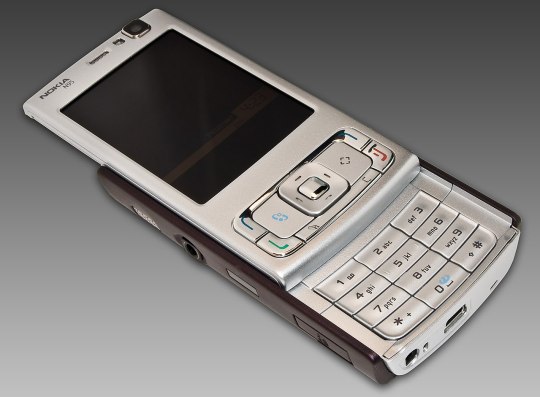
Most phones had a shitty dongle (eww) like for example Sony Ericsson W800i (2005) which was branded "Walkman", clearly in attempt to demonstrate that a phone is capable of having music playing functionality:

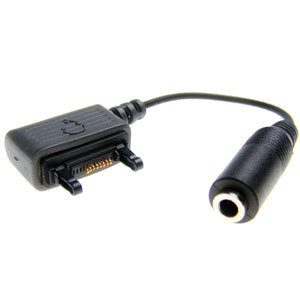
This is analogous to the situation we have right now with the USB-C -> 3.5mm jack dongles except worse because each phone company has its own.
Better phones had a 2.5mm jack which was a simple mechanical converter, like Nokia E51 (2007) I bought in mid-2008 and replaced my MP3 player with. It was fairly annoying and it took me several dongles to find one that I was sort of okay with.
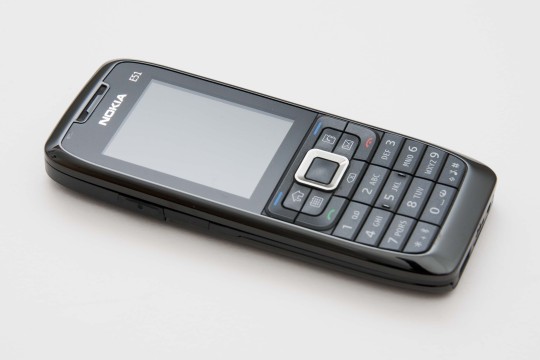

There's also a problem with storage. Nokia 5510 (2001), which, btw, also had a 2.5mm jack, was the first Nokia phone with the capability to play music
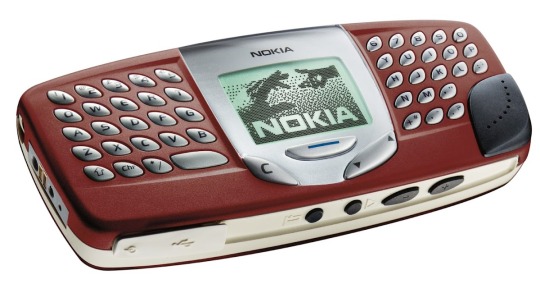

but it only had 64MB with no way of extending it, allowing to store 16-40 songs depending on quality, according to discussions on gsmarena back in 2006.
The aforementioned W800i had Memory Stick Duo as its storage
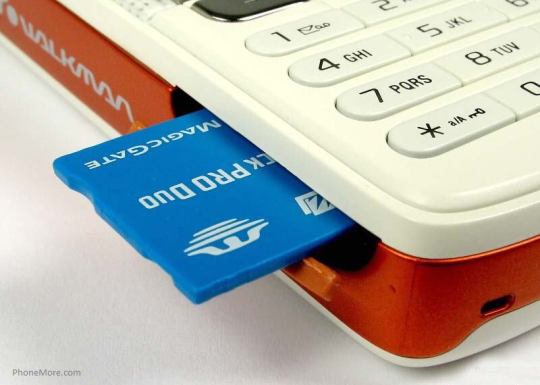
which is notably larger than a microSD card.

and of course these were the times where the war of different kinds of memory card standards was still waging and was not over until 2010

so Sony Ericsson, which was still insistent on using its own Memory Stick standard, would not be fine with using microSD (2004), but its own Memory Stick Micro (M2) was introduced in 2006 so that W800i from 2005 could not use it.
Both the issue of storage and connectors made phones in 2004 to not be practical yet for purpose of playing music, but it was theoretically possible.
And of course the original post does not mention using 20 year old phones to play music, but merely using the 3.5mm jack to connect to a music playing device, and the 3.5mm jack has been used in this context since way longer than that, most notably, mostly thanks to Sony Walkman TPS-L2 (1979), the first device from the "Walkman" brand that had not only a headphone jack, but two headphone jacks.
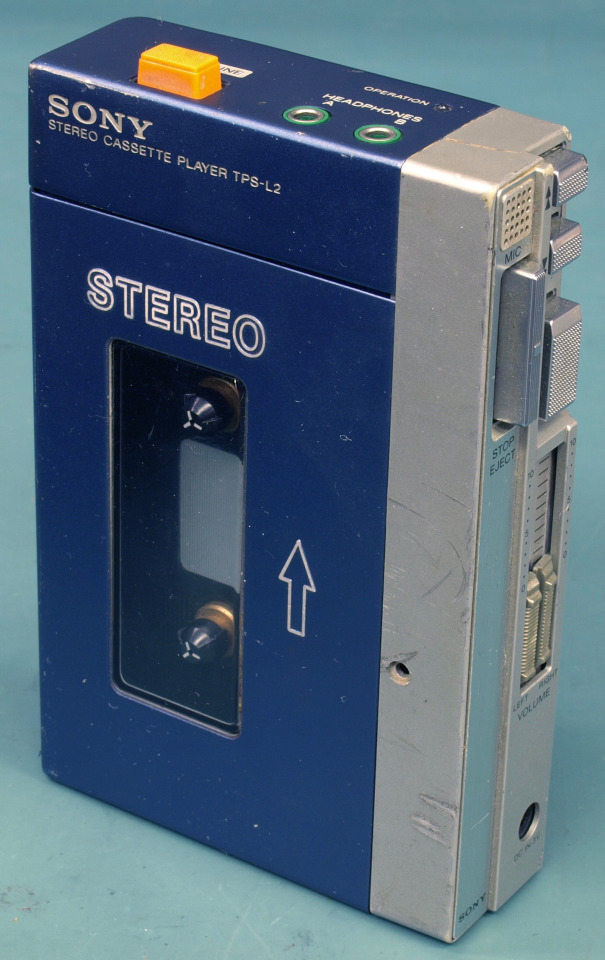

Then there's also the fact that we ended up with 3.5mm jack is also not a given, since 3.5mm jack is itself an improvement on the 6.3mm jack (the following photo demonstrates a 6.3mm jack to 3.5mm jack cable)
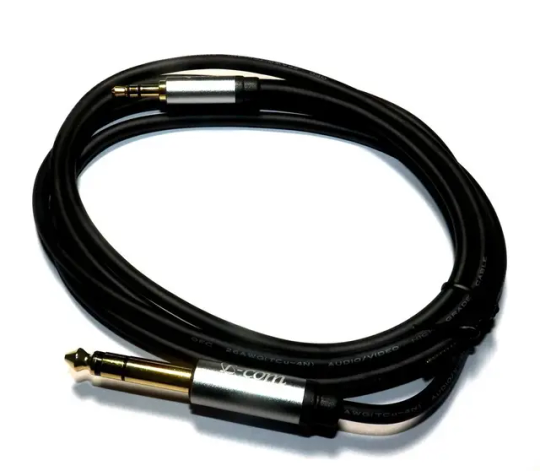
Now here for my personal opinion: it's kinda sad we switched from needing the dongle, to not needing the dongle, to needing the dongle again. And yes, bluetooth audio exists, which I even use, but even now it is notoriously unreliable.
Furthermore whoever removed the audio jack from phones should be grilled in front of congress. The fact that I need a dongle to listen to music on a modern telephone while 20 years ago I could have simply plugged a universally standardized cord into the audio jack everyone knew how to use is an anti-human move that should be punished.
81K notes
·
View notes
Text
Adhiper WMC-NW20MU USB Charger Cable Replacement Charging Sync Data Cable Supply Power Cord for Sony Walkman MP3 MP4 Player NWZ-A726 A728 A729 A815 A816 S616 Series and More (3.3ft)
Price: (as of – Details) Product Description Wide Compatible Compatible with Sony Walkman MP3 MP4 Players Models: NW-A80X NW-A800 NW-A805 NW-A806 NW-A808 NW-A808S NW-A810 NW-A820 NW-A916 NW-A918 NW-A919 NW-S603 NW-S605 NW-S615 NW-S616F NW-S703F NW-S705F NW-S706F NW-S715F NW-S716F NWZ-A10 NWZ-A15 NWZ-A17 NWZ-A72X NWZ-A81X NWZ-A82X NWZ-A92X NWZ-A720 NWZ-A726 NWZ-A728 NWZ-A729 NWZ-A800 NWZ-A810…
0 notes
Text
Generations And Music
Generations And Music Somebody posted this statement on socials recently and it caused quite the debate.‘IF PEOPLE WANT TO KNOW WHY GEN X IS ALWAYS SO MAD IT IS BECAUSE WE HAD TO REPLACE OUR RECORD COLLECTION WITH A TAPE COLLECTION AND THEN REPLACE THAT WITH A CD COLLECTION THAT WE SLOWLY REPLACED WITH AN MP3 COLLECTION AND NOW NEED A SUBSCRIPTION TO LISTEN TO MUSIC’Do you feel this describes GenX except for the vinyl part? Vinyl really defines the boomers right?Many GenX have been saying “I had records” but I feel they’re missing the point of the statement. GenX ‘had’ records in the way that they ‘had’ Elvis. It doesn’t define them.I feel GenX is the portable music generation and thus the Walkman generation. And we supplanted the boomers ‘vinyl’ dominance. BUT the rest of the statement rings very true. But any vinyl I had I wasn’t ‘angry’ to replace. In fact my musical taste hadn’t honestly been cemented yet.Also, someone said GenX started in ‘65 but I feel a generation doesn’t ‘start’ until they’re the pop culture definers. BORN in ‘65 yes, but ‘started’ in 1980.Curious to see how everyone feels? Submitted August 10, 2024 at 04:40AM by ZitRemedy11 https://ift.tt/4EKj5Mx via /r/Music
0 notes
Text
Music on the Move: How Mobile Technology Redefined Listening
Mobile technology has fundamentally changed how we listen to music, making it possible to enjoy our favorite tunes anywhere, anytime. From the groundbreaking Walkman to the multifunctional smartphones of today, portable music devices have continually evolved, transforming our listening habits and the music industry. This article traces the evolution of mobile music devices and their profound impact on our daily lives.
1. Early Mobile Music Devices:
The Portability of Cassette Players: Before the era of digital music, portable cassette players were the first significant leap in mobile music technology. Introduced in the 1960s, these devices allowed music lovers to carry their favorite tapes wherever they went. The compact size and battery-powered operation made cassette players a popular choice for on-the-go listening.
The Walkman Revolution: The launch of the Sony Walkman in 1979 revolutionized personal music consumption. The Walkman’s lightweight design and superior sound quality made it a cultural icon of the 1980s. It provided a personal soundtrack to daily activities, whether commuting, exercising, or simply relaxing. The Walkman’s success established the foundation for the future of mobile music technology.
2. The Rise of Digital Music:
Transition to Compact Discs (CDs): The introduction of CDs in the 1980s offered a significant improvement in sound quality over cassette tapes. Portable CD players, like Sony’s Discman, became popular in the 1990s. These devices allowed users to enjoy the clarity and durability of digital audio while on the move. However, early models were prone to skipping when jostled, making them less suitable for active use.
Technological Improvements: Advances in technology, such as anti-skip protection and shock absorption, addressed these limitations, making portable CD players more reliable. Despite these improvements, the inherent size and fragility of CDs posed limitations compared to the compact nature of cassette tapes.
3. MP3 Players:
The Digital Revolution: The late 1990s and early 2000s marked the beginning of the digital revolution in music with the advent of MP3 players. These devices allowed users to store thousands of songs in a compact and portable format, eliminating the need for physical media. MP3 players offered unprecedented convenience, allowing music lovers to carry extensive music libraries in their pockets.
Impact on Music Consumption: The MP3 format revolutionized music consumption by enabling easy downloading and sharing of music files over the internet. The ability to create and organize digital music libraries transformed how people interacted with their music collections. Devices like the Rio PMP300 and the Creative NOMAD Jukebox were among the first to capitalize on this trend.
4. The iPod Phenomenon:
Revolutionary Design and Functionality: Launched in 2001, the iPod redefined the portable music player market with its sleek design, intuitive interface, and large storage capacity. Apple’s iPod quickly became the gold standard for digital music players, offering a seamless integration with iTunes software. The iconic click wheel and the ability to purchase and download music directly from the iTunes Store made the iPod a game-changer.
Influence on the Music Industry: The iPod and iTunes Store transformed the music industry by making it easier for users to purchase, download, and organize their music collections. This shift from physical albums to digital downloads had a profound impact on how music was marketed and consumed. The iPod’s success laid the groundwork for the development of the iPhone, which would eventually integrate music playback with smartphone capabilities.
5. Smartphones and Streaming Services:
Convergence of Music and Mobile Technology: Today, smartphones have largely replaced standalone portable music players. With the integration of music streaming apps like Spotify, Apple Music, and YouTube Music, users can access millions of songs on demand. The convenience of having a single device for communication, entertainment, and music has reshaped our listening habits.
Streaming Services Revolution: Streaming services have revolutionized music consumption by offering vast libraries of music accessible anytime, anywhere. Subscription models provide users with access to millions of songs, curated playlists, and personalized recommendations. The shift from owning music to streaming has transformed the industry, creating new opportunities for music discovery and consumption.
Impact on Listening Habits: The integration of music streaming apps with smartphones has changed the way people discover and enjoy music. Features like offline listening, curated playlists, and algorithm-driven recommendations have enhanced the user experience. The ability to share music and create collaborative playlists has also added a social dimension to music listening.
6. High-Quality Portable Music Players:
The Audiophile Market: Despite the dominance of smartphones, there remains a niche market for high-quality portable music players. Devices like the Astell&Kern and Sony’s Walkman series cater to audiophiles who seek superior sound quality and dedicated music playback features. These high-resolution audio players offer an immersive listening experience, with support for lossless audio formats and advanced digital-to-analog conversion.
Technological Advancements: Advances in digital audio technology have enabled portable music players to deliver exceptional sound quality. Features like balanced headphone outputs, high-end DACs (Digital-to-Analog Converters), and customizable sound settings have made these devices a favorite among discerning listeners.
7. Wearable Technology:
Smartwatches and Fitness Trackers: Wearable devices, such as smartwatches and fitness trackers, have also embraced music playback capabilities. These devices offer the convenience of listening to music during workouts or other activities without the need for a separate player. Integration with streaming services allows users to access their favorite playlists and control music playback directly from their wrist.
The Future of Wearable Music: The future of wearable music technology looks promising, with ongoing developments in battery life, storage capacity, and connectivity. As wearable devices become more advanced, they will likely offer even more features and capabilities for music lovers.
Conclusion: Mobile technology has redefined how we listen to music, offering unprecedented convenience and accessibility. From the iconic Walkman to the latest smartphones and wearable devices, each generation of portable music players has brought new features and capabilities, enhancing our ability to enjoy music on the go. As technology continues to evolve, the future of mobile music listening promises even more innovation and excitement.
0 notes
Text
omg i have this phone in my collection!!!!!!!
looking for a replacement battery rn cuz battery life is abt one hour
the earbuds are from one of the sony walkmans I have and honestly the sound quality is fucking amazing wish it had more than like 2 megabites of usable memory so I could use it as an mp3 player
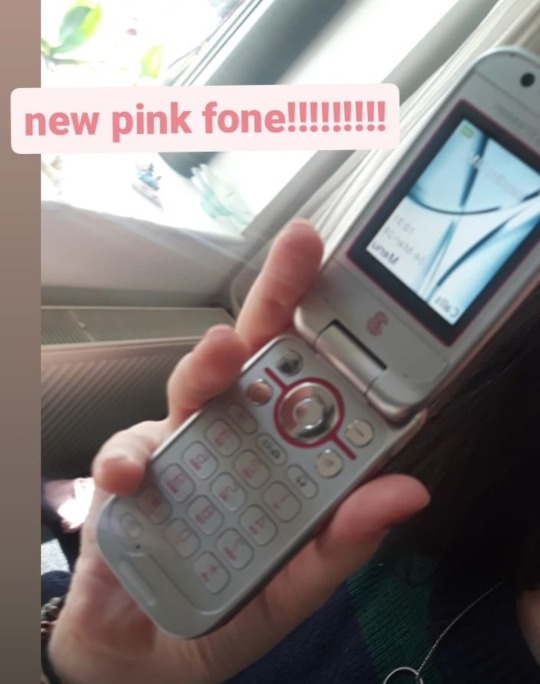
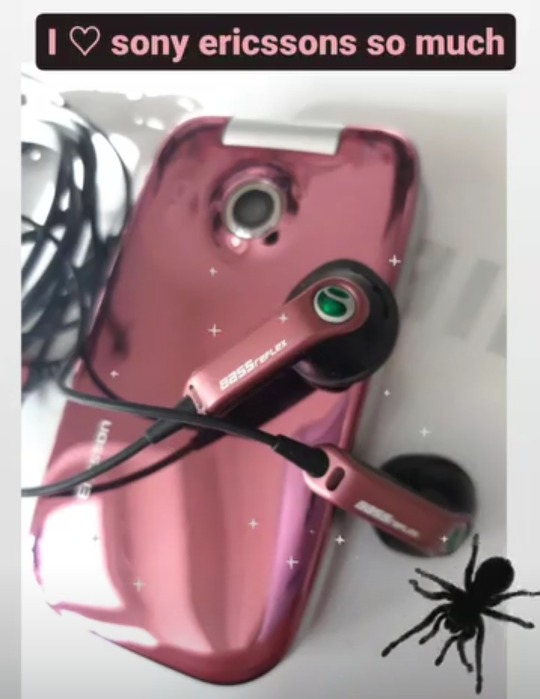

Sony Ericsson Z750 (2007)
#sony ericssons were so badass#oh yeah and sadly the light up display on the back doesn't work anymore :(#sony ericsson#flip phone#tech
1K notes
·
View notes
Text
I had to change to a different music media center since the one I was using will no longer be supported soon, which means importing songs. And for some reason the new one won’t read Kiss Kiss Kiss. There is no other file that it can’t read, that’s the only one. It could have taken a Kaito song, one of Super Junior’s songs... but no it has to be a SHINee song. You do not take any SHINee song from a shawol.
GIVE ME KISS KISS KISS
#it won't even read my much loved mp3 player so I have to transfer things manually but now this#why is it all happening at once that all of the programs and electronic devices that I own are no longer being supported#I don't have the 1000+ bucks to replace them all at once#I already replaced the tablet I was using#wish I could update to a newer Walkman but that'd set me back even more than the tablet did oddly enough#personalish#mini rant#but honestly I'd be more than happy to keep using my Midori if she had more room and continued to be supported by whatever program Sony make#my electronic woes have been numerous this year
2 notes
·
View notes
Note
If in the mood for some happy headcanons (and a request), maybe picture Buttercup snuggling up to Snake on the couch in the shack while he adjusts the volume on his walkman (probably stolen). Cue several years later to adult!Snake and teenage!Buttercup, replace shack with apartment (albeit a crappy one) and an mp3 player (also most likely stolen), and without looking down he says, "You know there'sss another couch in here, right?" and she just mumbles, "yeah" and stays right where she is. :P
I’m assuming this is the same anon with the big brother Snake concept
Please keep it up, I am living for this 💚
7 notes
·
View notes
Photo

Something a little retro! I decided to replace the mp3 player in game with a walkman/cassette player. Because of the manner in which the sims hold the device, the positioning is not completely perfect but it works well for what I needed and wanted. (more pictures can be found under the cut)
As always with defaults, you can only have one. Thanks to aroundthesims for the base mesh I mangled together with sims 4 objects to create this. Textures came from google images and edited to be simlish. :)
This is for Sims 2.
-download-



507 notes
·
View notes
Text
I got my first walkman in 1984. My first tape was Wham!, I think. I got the yellow walkman in 1988 and used it though most of the 90s. I pretty much went straight from tapes to mp3s, I never replaced my walkman with a discman, they seemed so fragile and pointless to me. Walkman to ipod, straight shot.
If we wanted to watch a movie on our tv in the 80s, we would go to the video rental shore, rent a VCR and a movie, and bring it home for 24 hours. Sometimes my sister and I would shove a tape player/recorder up against the speaker of the TV to record the audio so we could hear it later.
We made mixtapes by listening to the radio with our tape primed at the right spot and our fingers hovering over the record button when the song we wanted in the mix came on.
My family got it's first and only shared computer in 1990. It was not networked. If you wanted to put something on it, you had to stick a disk in it. It could use both kinds of floppy disk (actually floppy and not-floppy floppy disk).
I was one of 2 people on my residence floor at university who had a desktop computer in 1993. My roommate had a word processor with a screen you could see 3 lines at a time on, and she wrote her papers on that. She wrote all her papers in the middle of the night, so I have no idea how that thing worked.
I had a dot matrix printer.
The only way for me to access the internet was to go to the computer lab in the building next door, which closed at about 10pm, but they would let me stay after that, I just couldn't leave and come back in again. It was amber or green characters on a black screen. Often, you couldn't see what you were typing until you hit enter. If you hit backspace, it showed up as ^H. If a person didn't know that you can't backspace, they'd contribute stuff like this:
Hi guise^H^H^H^Huys!
I got my first email address in 1993. Most people did not have email addresses at the time, so you'd assume people didn't unless they told you otherwise. I couldn't check my email over the summer in 1993-97, because we didn't have dial up at home.
The internet was basically lists and directories at the time, mostly Gopher lists and directories, which take you to other directories. There was a directory of songs with their guitar chords, I remember that. Just...tons of tons of different static directories of "pages" with information on them. And there were message boards, the alt boards that were at one point absorbed into Dejanews. There were lots of threaded conversations going on, thousands of message boards. I was on one called alt.shoe.lesbian. It had been created by some guy for porn or kink purposes, but then a bunch of 30something lesbians found it and made it a friendly spot to post about general life stuff.
There were lots of ways to talk to strangers live, too: there was IRC, which is like discord, telnet-based communities (MUD/MUCK/MOO/MUSH), which are not. I made a lot of friends on MOOs. (Julian Dibbell wrote a piece on sexual assault in a virtual world about an incident on lambdaMOO). Neal Stephenson's Snow Crash is a very good depiction of what the internet felt like at that time, projected forward.
I didn't see a graphical web browser until 1995. It was Netscape, and the first time I tried to use it, nothing loaded. It was still very exciting.
I got my first laptop in grad school in 1997. It was able to connect to the internet from my laptop via dial up for the first time in 1998. I would get my readings from JSTOR and print them out and pretend I got them from the library. It felt like cheating.
In 1999 I was in graduate school again and got DSL cable internet for the first time, but no wifi. I had a 30 ft ethernet cable and a laptop. It took only 3-5 minutes to download a song off Napster! And then Limewire. This was when I first discovered online fanfiction. It really should have happened sooner, I went down the wrong gopher holes, clearly. Got my first blog in 1999 (blogger). Got my first fannish blog in 2000 (livejournal).
In 1999-2000, I would plug earphones into my laptop while taking the bus home, and stick my thumb in it so it wouldn't close all the way and stop playing. World's biggest MP3 player. Still better than a discman. I was very ready for the ipod when it appeared in 2001, RIP the clickwheel.
When the planes struck the world trade center towers in September, 2001, the media said the internet failed because websites and cell reception all went down and people in the thick of it in Manhattan couldn't communicate out. That wasn't totally true. Telnet was fine. I was in touch with several people at ground zero via telnet and called their families for them to let them know that they were okay.
I finally got my first cell phone in 2003. I was in yet another grad school.
I got my first wifi router in 2005 when I got my first real job. I also replaced my crappy phone with a pink razr.
I got my first iphone in 2007. That was just a couple of years ago, wasn't it?
Younger writers. Please, just know that you could not skip to different songs on a cassette tape, that’s CDs. With tapes you pressed fast forward or rewind and prayed.
Also, VHS tapes did not have menu screens. Your only options were play, fast forward, rewind, pause, stop, or eject.
Y’all are making me feel like the crypt keeper here, I’m begging you 😭
56K notes
·
View notes
Text
i’m so glad the majority of technology i use takes the same type of charger.
#espy talks#i can use the same charger on everything but my mp3 player#which to be fair is like an 8 year old walkman#i dunno how long i've actually had it but it's been a long time#heck i can use the same cables to power my intuos#if ya have one and your cord breaks for some reason youy can buy a replacement at walmart for pretty cheap and i think that's beautiful#and BONUS because you can buy a long charger for XTRA move-around-ability#just make sure it's a usb charger though
3 notes
·
View notes
Text
#Blog Post 6. Inventions That Changed Music
Music had always been a fundamental aspect of the human way of life before civilization took hold of the human race. Music is rightly said to be one of the greatest and ever-present companions of man. Whether its laughter, pain, sorrow, love, or hate, music has a rare ability to talk to people in a way that resonates with their innermost emotional feelings. Music's massive influence on man definitely stood up to the test of time. Just as man is extremely adaptive and has changed over time, so music has adapted and changed, irrespective of cultural changes. The ingenuity of Man has brought with it a powerful force that has substantially affected the music industry. The past two centuries have encountered technological advances not previously thought of. These have influenced both positive and negative ways of producing, distributing and consuming music. There have been numerous technological advances in music since the 18th century, but music digitization is the most influential technology that has taken the world of music by storm. Since the time when music was readable by computers, the music industry's dynamics and economics have changed. In addition to common and useful instruments such as electric guitar and synthesiser, technology has brought us new production equipment such as high-fidelity microphones, re-mastering equipment and CD-ROMs that bring us a crystal-clear recording sound. Let’s go through some of the greatest invention that lead to the evolution of music industry.
Phonograph
American inventor Thomas Alva Edison was officially credited with inventing the phonograph on 21 November 1877, a revolutionary device capable of recording and playing back sounds. This breakthrough at the time was greeted with hysteria, so the thought that we could retain the spoken word was absolutely extraordinary, and its influence has changed every aspect of our modern world. While working on two other world-changing inventions of the 19th century–the telephone and the telegraph, Edison first thought about the phonograph. He decided that the technology used for the two could also be changed to record sound–something that was never even considered as a possibility until now. In 1877 he started to create a machine with two needles, one for capturing the sound and one for playing it back. The first needle would indent the sound vibrations onto a tin foil-covered tube, while the other would duplicate the same indentations again to create the same sound. When he spoke the oddly chosen words “Mary had a little lamb” into the machine, he was awed and astonished to hear them played back to him. The music technology was revolutionised by the phonograph. Performances are recorded and at their leisure people would listen to them. It also made more public about music and communication. The invention marked the birth of a new form of entertainment and a completely new business area that fuelled the market for the new invention, the music industry.
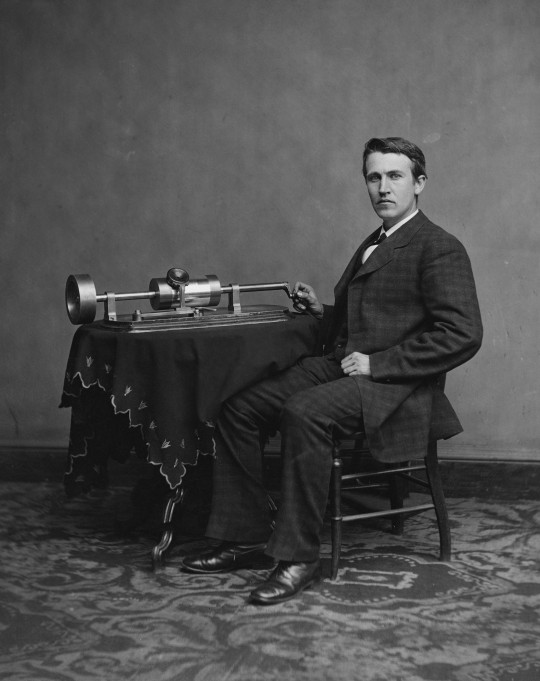
Microphone
A microphone is a device that converts mechanical energy waves or sound into electrical energy waves. Speaking into a microphone excites (moves) a diaphragm that is coupled to a device that creates an electrical current proportional to the sound waves produced. Microphones are a part of everyday life. They are used in telephones, transmitters for commercial radio and television broadcast, amateur radio, baby monitors, tape recorders, motion pictures, and public address systems. The first microphone was invented as a telephone transmitter by Alexander Graham Bell in 1876. It was a liquid device that was not very practical. The first microphone was invented by Emile Berliner in 1876. The carbon microphone was used up to the 1970s when it was replaced by piezoelectric ceramic components for radio transmissions and extensively in telephone transmitters. The microphone became widely popular as it recorded sounds louder than the ordinary human voice from speakers at a volume. The Bell Telephone Company was extremely impressed with the invention and later purchased $50,000 for Berliner's microphone. Microphone paved the way towards a new perspective in the music industry.
Magnetic tape
In 1928, Fritz Pfleumer developed a magnetic tape using oxide bonded to a strip of paper or film and patented it in 1929. Magnetic tape is a magnetic recording medium made of a thin, magnetizable coating on a plastic film long, narrow strip. Building on this, AEG invented the magnetophone and advances in the chemical technology of polymers allowed its partner BASF to ship the first magnetic tape in 1935--a film of cellulose acetate covered with an iron oxide lacquer bound with additional cellulose acetate. Many developed nations continued to work on industrial magnetic tape and military applications with World War II approach. Magnetic tape has become a vital storage medium for the advent of the information age, used for both video and audio, in formats such as cassette and 8-track, for capturing sound in motion pictures (replacing optical sound tracks) and finally for digital recording, including computer memory. Digital recording has been completely replaced by analogue recording over the past few decades. Various new technologies are now more commonly used to capture digital signals, including those that use lasers. While magnetic tape is still used for niche applications, it is no longer as omnipresent as it once was.
Vocoder
Bell Labs ' Homer Dudley developed the vocoder as a way to reduce the length of a vocal signal by reducing the cost of costly transatlantic copper cables. The vocoder shares its original intention with the.mp3 format, which was once controversial but now widely used. Both are essentially types of compression of data. It proved to be not as cost-effective as anticipated, but the vocoder was repurposed during World War 2 as a way to secure communications between political powers. A vocoder uses a control or modulator signal (such as the human voice sung or spoken on a microphone) to break the signal into various bands. To drive an instrument, also known as a carrier, we then use the amplitude of these signals. Since the signal is split several times, the resulting effect keeps sounds recognisable in human speech in tact and combines these sounds with the instrument used as the carrier (often a synthesiser). The resulting effect is a multitimbral musical instrument that still preserves the characteristics of human speech when using a synthesiser.
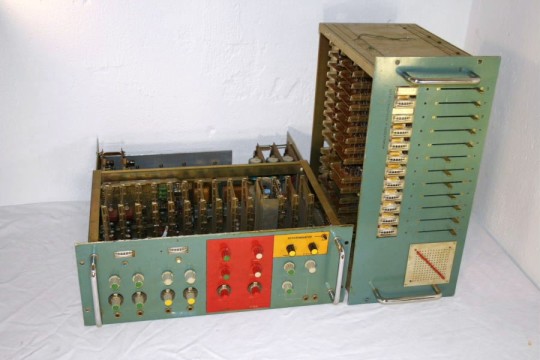
The Walkman
Walkman is a Sony-made brand of portable media players. The first Walkman, released in 1979, was a portable cassette player that changed listening habits by enabling people on the move to listen to music of their choice. It was developed by Masaru Ibuka, co-founder of Sony, who thought that the current portable player of Sony was too unwieldy and costly. A prototype was produced in 1977 from a modified Sony Pressman, a portable tape recorder intended for journalists. Boomboxes and portable radios had been around for a while, but the Walkman made private portable music, bringing people away from home to a whole new era of listening to music. Over the years, the Walkman would see several hardware variations, including "Discman" CD versions and MiniDisk players, as well as more recent portable media player products that Sony is still selling today. It's not quite a brand's powerhouse as it once was, but it's still as important as ever 40 years ago, the changes that Walkman created in our lives and how we respond to both music and technology.
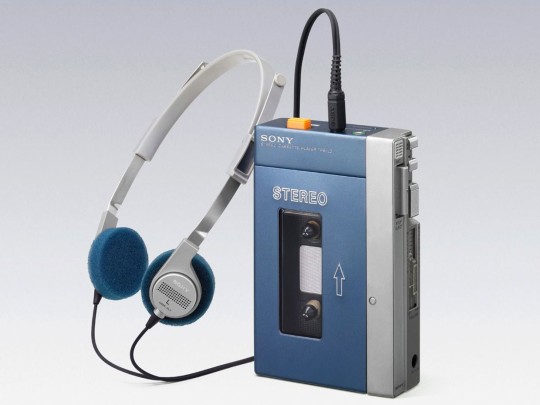
Pro Tools
Pro Tools is a digital audio workstation developed and released by Avid Technology (formerly Digidesign) for Microsoft Windows and macOS which can be used for a wide range of sound recording and sound production purposes. Pro Tools can run as stand-alone software, or operate using a range of external analogue / digital converters and internal PCI Local Bus (PCI) or on-board digital signal processor (DSP) audio cards to deliver reverb, equalisation, and compression effects. Like all digital audio workstation software, Pro Tools can use the Undo feature to perform multitrack tape recorder and audio mixer functions, along with additional features that can only be performed in the digital domain, such as non-destructive editing. Pro Tools has had a major impact on the music industry and how it has grown. Musicians of the past had to get a record label to sign up and pay thousands of dollars to buy studio time to produce an album. Pro Tools has changed everything. First, the time needed to record and edit music is greatly reduced. With analogue recording, to edit tracks, one has to spend hours cutting and splicing tape recording, Pro Tools can do this in one click. Second, the need to get your band signed into a label to record an album is nearly gone. Nearly anyone can save up to $300 to purchase a basic set of Pro Tools and record whenever they want for years to come.
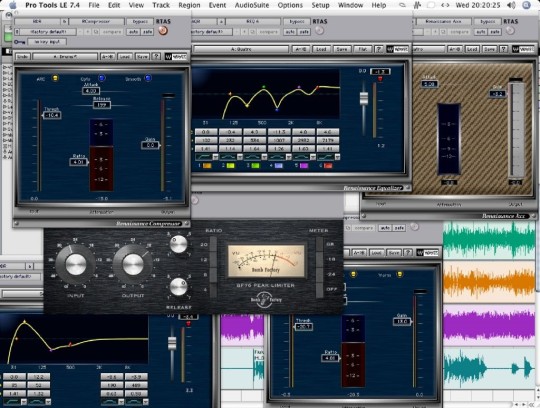
The MP3
The journey of the revolutionary audio file began in 1982, when German audio engineer Karlheinz Bradenburg helped a professor find ways to use electronic telephone technology to transmit music. As computers became more sophisticated over the next 13 years, so did Bradenburg's progress in compression (his biggest snag, incredibly, came when trying to capture Suzanne Vega's vocal on "Tom's Diner" without distortion). Standards were developed in conjunction with the Moving Picture Experts Group (MPEG), and a proper host had arisen thanks to the Internet. The. MP3 extension was chosen and cemented in July 1995, and the rest, including its unprecedented snowball effect on the music industry, are still embedded in history.
Auto-Tune
Most of these inventions came from the scientific minds, and no exception is Auto-Tune. Geophysicist Dr. Andy Hildebrand founded his parent company, Antares Audio Technologies (originally called Jupiter Systems), in 1990. Hildebrand patented the Infinity sample-looping programme and various Pro-Tools plug-ins for the first time using the same Digital Signal Processing (DSP) technology he used to measure seismic data. But that etched his legacy was Auto-Tune − a DSP-powered programme used to run correct vocals and instruments. Auto-Tune changes a singing voice's pitch to make everybody sound perfectly in tune. It is subtle enough when used correctly that it cannot be detected. The first song that was released on vocals using Auto-Tune was Cher's 1998 song "Believe."
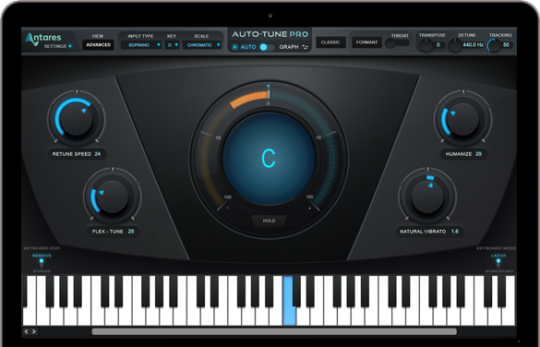
iPod
Walkman and Discmans were instantly forgotten, and when the iPod was commercially available in October 2001, .MP3s gathered on desktops mushroomed. It cost $400 and needed semi-regular charges with 5 GB of collated, alphabetized, prioritized albums, songs and playlists all available and scrollable via a touch-sensitive pinwheel. Eighteen years later, the features of the iPod have fused with telecommunications via the iPhone, inspired hundreds of unsuccessful imitators (hello, Zune) and created iconic campaigns of ads that produced standalone iconography.

Conclusion
Nearly every advancement of technology has influenced the music industry, from aircraft to ships and chips to the internet. As technology as well as music industry is an endless field with limitless innovations, we expect more and more innovative collaboration of technology and music. The art of combining science and technology to music industry had always resulted in the formation of something brand new to world. Technology now a days had paved a new perspective of our music cultures and influenced our day to day life. I hope there is good days to come and looking forward for revolutionary technologies.
References
1. Alexander, D. (2019). 9 Technologies That Changed the Way Musicians Created Music Forever. [Online] Interestingengineering.com. Available at: https://interestingengineering.com/9-technologies-that-changed-the-way-musicians-created-music-forever [Accessed 16 Nov. 2019].
2. Alexander, S. (2017). Here are 5 Inventions That Changed Music. [Online] The Geeks and Beats. Available at https://www.geeksandbeats.com/2017/10/5-inventions-changed-music/ [Accessed 16 Nov. 2019].
3. Auto-Tune. (2019). [image] Available at: https://www.emusician.com/gear/a-look-at-the-hottest-items-from-the-2018-namm-show [Accessed 16 Nov. 2019].
4. En.wikipedia.org. (2019). Timeline of music technology. [online] Available at: https://en.wikipedia.org/wiki/Timeline_of_music_technology [Accessed 16 Nov. 2019].
5. Entertainment.ie. (n.d.). The 9 Most Pioneering Advancements in Music History. [Online] Available at: https://entertainment.ie/music/the-9-most-pioneering-advancements-in-music-history-257354/ [Accessed 16 Nov. 2019].
6. Herzog, K. (2014). 24 Inventions That Changed Music. [Online] Rolling Stone. Available at: https://www.rollingstone.com/music/music-lists/24-inventions-that-changed-music-16471/phonograph-1877-222487/ [Accessed 16 Nov. 2019].
7. I pod. (2019). [image] Available at: https://sipse.com/tecnologia/ipod-clasico-coleccionistas-precios-dispositivos-apple-204554.html [Accessed 16 Nov. 2019].
8. Nast, C. (2016). 10 Technologies That Changed Music. [Online] Vogue. Available at: https://www.vogue.com/article/ten-technologies-that-changed-music [Accessed 16 Nov. 2019].
9. Pro tools. (n.d.). [image] Available at: http://www.kilroy-records.be/public_html/viewtopic.php?t=4022 [Accessed 16 Nov. 2019].
10. Theo2.co.uk. (2016). 8 Technological Advances That Changed The Music Industry Forever | The O2. [Online] Available at: https://www.theo2.co.uk/news/detail/blog_8_technological_advances_that_changed_the_music_industry_forever [Accessed 16 Nov. 2019].
11. Thompson, C. (2016). How the Phonograph Changed Music Forever. [online] Smithsonian. Available at: https://www.smithsonianmag.com/arts-culture/phonograph-changed-music-forever-180957677/ [Accessed 16 Nov. 2019].
12. vocoder. (2019). [image] Available at: https://windowsreport.com/vocoder-software/ [Accessed 16 Nov. 2019].
13. Walkman Sony. (n.d.). [image] Available at: https://twitter.com/hashtag/walkmansony [Accessed 16 Nov. 2019].
1 note
·
View note
Text
What I Miss Most
Summary: The reader is very curious about how life was back in the ‘40s. Bucky is just amused.
Requested by: @tokoyamisstuff
Pairing: Bucky Barnes x reader
Word Count: 673
Warnings: So much fluff!

“What the hell is that?” You startled at the sound of Bucky’s voice, turning to see him in the doorway of the bathroom. “What're you taking pills for?”
You popped the pill into your mouth, replacing the lid of the bottle. “They’re birth control pills, Buck.”
“They're what?”
You turned to look at him now, eyes wide. “Birth control pills. Did you think about why you don't wear condoms when we have sex?”
“I don't really think when we have sex.”
You laughed at that, placing the bottle in the cabinet and moving past Bucky, him following you. “So you didn't have contraceptives in the ‘40s?”
Bucky shook his head and you turned around to face him abruptly, making him bump into you. You ran your hands down his torso, feeling the muscle tense under your fingers and smirked.
“Aren't you glad we have them now?” Winking, you suppressed a giggle as you walked away.
...........
“I know you didn't have MP3 players but what about Walkmans?” You asked as you and Bucky entered the living space where the rest of the team was sprawled on couches.
“Never heard of ‘em.” Bucky replied and you scoffed.
“You didn't even have Walkmans in the 40s? What did you have then?”
Steve was staring at you with wide eyes, before turning to glance at Natasha. Was this a good topic to talk about? Especially with Bucky? Steve didn't know just how sensitive he was to the mention of the past, so he was very surprised when Bucky laughed and flipped onto the couch.
“At least we didn't have AIDS.”
Y/N pursed her lips and sat down next to him, cuddling closer. “Touche.”
Five minutes passed before Y/N’s head turned upwards to look at him. “What about frozen yogurt? Please tell me you had frozen yogurt.”
“Nope.” Bucky grinned at the scandalized look on her face, enjoying the shock every word sent through her.
Y/N got comfortable against his chest, arms tight around him. “Tell me more?”
Bucky had never been able to resist her before. How could he do so now?
“Well,” he started. “We had free radios. Every man in every street crowded around them near the evening. The Great Depression happened in the 30s, so we'd all just huddle together and listen to comedies on the radio so we could just forget about all the bad news. Remember that, Steve?” He turned to look at his blond friend, who nodded and smiled.
“I loved watching musicals.” He ran his fingers over Y/N’s bare arm, drawing patterns. “And I absolutely loved dancing. Loved it. Took a dame dancing whenever I had the chance.”
Y/N looked up at him, pouting. “You don't ever dance with me.”
Bucky laughed and shrugged. “Never thought it would be your thing. All you guys do is grind and twerk on each other in clubs.”
Y/N slapped his chest as Steve laughed. “Don't pretend you don't like it.”
Bucky grinned at her. “You know I love it.” He pecked her lips. “But there's something about those dances… I miss that.”
Y/N was facing him now, sitting between his legs. “Teach me, then. We'll dance together.” She stood up. Bucky raised an eyebrow.
“Right now?”
“What's the matter, Barnes? Afraid you've lost your touch?” Bucky could hear the humor in her voice and he stood up, eyes determined. Tony was saying something to FRIDAY, asking her to put on 40s music. Everyone was grinning, Sam and Clint were laughing and hooting.
They danced all around the living room, Y/N messing up occasionally, but she was a quick learner and soon they were gliding smoothly on the marble floors. Bucky’s bare feet were cold from the floor and Y/N slipped every once in a while because of her socks, but their laughter was pure and unfiltered, smiles huge as their friends cheered them on, familiar tunes ringing through Bucky’s ears.
The warmth in Bucky’s chest was incomparable. The peace in his heart was unprecedented.
Permanent Tags: @gobletofweasley @rhiisnotawitch @fandomnerdsarecool @embrace-themagic @shuriismyqueen @just-saying-26 @ihclipse @droidyouseek @fandomtrashfangirl @pensysto @alisonhepps @animechick725 @goldenkillmonger @theshortegg @xxashy999xx @the-criminal-soldier @demonspawn2468 @parkerrpeterr @ironspiderguy @youlightmeupfinn @tomsfireheart @supernatural-girl97 @spideydaddyboy @give-me--some-pie @cherryhollands @buckysb-tch @rosescentedblood @doowneey @xloue @phasma-trash @livelovelike555 @kokogxddess @keepyourdreamsalive @oceaneyedstan @alt-wildflower @your-pixels-are-showing @mdgrdians @jamesbarnesplums @tannyator @tinyfistwarrior @januaryechoes @daynight-dreamer-stuff @lazyandobsessed @meganthegeek @his-paradox @lokilovestortillas @omalliethealliecat @sebby-addiction @halceam @lost-and-wandering-alone @lokis-queen05 @megg1346 @wellfucksorrymum @illegalholland @v-2bucky @wintrrrsoldier @upsidedownbands @starbuckycofee @iwillwakeherinthemorning @poeetatodamneron @peches-et-lait @therealme13posts @im-on-something-different @crazy--mee @gluten-free-water @thewalkingironygirl @dontsassmecastiel @katlynisbatman
Bucky Barnes: @iheartsebastianstan @wintwrsoldiwr @girlwhoisfearless @vxidnik @usernamesarebitches @fuckthatfeeling @broadwaysprincess @solarbarnes @inadquacy @superiorsoph @buckysb-tch @nexitye @dontpanc @fleursirvart @goalie-love @clevertheoristpainter @bexboo616 @tokoyamisstuff @buckybarnesappreciationsociety @ceruleanrainblues @gubetown101 @edenmcgarden @wellfucksorrymum @lost-and-wandering-alone @typicalgeekgoddess @anxietystatement @take-my-life-not-my-heart @buckys-islandgirl @itskatt- @klmpun @buckyssxxhair @sadbitchimagines @a-d-d-i-s-y-n-z @buckywhoops @olukewarmo
#bucky barnes#bucky barnes x reader#bucky barnes imagine#bucky barnes fanfiction#bucky barnes fluff#bucky barnes x you#bucky imagine#bucky barnes love#winter soldier x reader#sebastian stan#sebastian stan x reader#bucky barnes one shot
690 notes
·
View notes
Text
I have been on the hunt for wired headphones for a long time but the thing I’ve also noticed is that they break a lot easier.
They thin out the wires as much as possible and they don’t invest in the durability of the casing either.
When I was a kid with headphones they snagged on things all the time. Popped right out of my walkman or tore my ears near clean off, very jarring, I was a bit clumsy as a kid.
The thing is I rarely had to get new headphones because the old ones cord broke. Sure, the ear pads would wear away into nothingness, or eventually the headpiece snapped at the extender because it had to be thinner than the rest and thus ended up being more fragile, so I absolutely would have to replace them...eventually.
But now? I have gone through maybe seven cords for my current headset after having it for a little over a year. 2 USB cords and 5 3.5mmAux cables.
One or two snags and they are toast, if not broken entirely frayed to the point where only one speaker works. Even normal use, plugging and unplugging, tears off the head of the cable before too long.
Like when I was a kid I used to snag my headphones so hard that once my mp3 player flew violently out of my hand and landed four feet away on concrete. Both the mp3 player and the headphones worked perfectly fine afterwards.
But now you breathe on them wrong and the cords just unravel themselves.
So even when you can find alternative solutions, they are cheap and make to break. It’s so fucking frustrating.
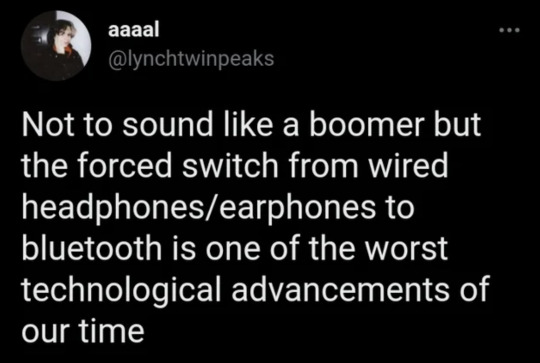
131K notes
·
View notes
Text
Convert FLAC To AAC Online Free
Convert FLAC to MP3. Ogg Vorbis is an open-supply and patent-free audio codec that's nice for streaming over the internet with out compromising velocity. Ogg Vorbis provides impressive sound at decrease bit charges than different lossy codecs. The one downside of Ogg Vorbis is that it compresses audio and discards knowledge for smaller file sizes. Nonetheless, it transfers audio rapidly and sounds high quality over Bluetooth. As a result of the typical music lover would not use this format to compress audio, you will not find many compatible units.
Secondly, and probably more importantly, I've been by means of ripping my music collection in a number of formats and encoding commonplace too many times already. The thought of having to re-rip again as a result of some new piece of apparatus needs AAC or WMA as an alternative of MP3 turns me cold, and encoding between lossy formats isn't a smart possibility as that trashes the sound quality. What I do is I remaster the unique or not too dangerous recordsdata before I put it right into a 320Kbps file that sound excellent in an Ipod or my car and even in my home sytem with great results In some instances its higher than it was before.I imagine that format is the best way to go It provides glorious high quality and the recordsdata are not too massive. AAC can be the standard audio format for Sony's PlayStation three and is supported by Sony's Playstation Moveable, latest era of Sony Walkman, Sony Ericsson Walkman Telephone, Nintendo's Wii (with the Picture Channel 1.1 replace installed for Wii consoles purchased before late 2007) and the MPEG-four video normal. HE-AAC is a part of digital radio standards like DAB+ and Digital Radio Mondiale. DSD, or Direct Stream Digital, is an extremely excessive-decision uncompressed audio format. DSD is even larger in quality than CD-high quality and HD obtain formats reminiscent of FLAC and ALAC. As a result of DSD is such a high-quality audio codec, digital audio converters are often needed to play DSD files if they don't seem to be suitable with your pc. DSD is a demanding encoder, making it impractical for streaming (at the moment). However, it is the best sound you will get over Bluetooth. If you want to import FLAC to iTunes with the standard of FLAC audio intact, you can convert FLAC to Apple's personal lossless audio format, ALAC (Apple Lossless Audio Codec). If you happen to care more about file measurement, you'll be able to convert FLAC to a extra frequent format like MP3 to gain extra compression charge and smaller file size. No matter you convert FLAC to ALAC or FLAC to MP3, convert flac to aac free all meta information (title, composer, and many others.) embrace album cover artwork will likely be saved. It's impossible to transform FLAC to AAC with out specialised software program that helps each formats. You will need Whole Audio Converter that is capable of doing single- and multi-conversion between FLAC and AAC codecs within a couple of seconds. The interface of this program was specifically developed for both skilled and non-professional users, to make compression options available for all comers. That is why Total Audio Converter gained large recognition among music users. On the Macintosh side of the home, I like Max It is rather easy to make use of and even will drop the transformed information into iTunes for you, in the event you so desire. It is a fantastic program. You possibly can choose no matter output format you need: AIFF (essentially CD), ALAC (Apple Lossless), AAC, etc. When you choose your output format, it is very simple to use. It helps all of the tagging you can presumably want, plus album art. It also convert AAC back to FLAC. As a practical matter, given the current value of diskspace and the time and effort concerned in ripping CDs, it seems poor planning to rip to anything but lossless. If nothing else, http://www.audio-transcoder.com/ it's rather a lot simpler and higher to transform FLACs to whatever-lossy-encoder-my-transportable-participant-suports slightly than intraconverting lossy codecs. FLAC (Free Lossless Audio Codec) is legendary for its lossless music format, namely the audio high quality is identical as the unique source. Since it's compressed, it takes up much less area. Additionally it is an open and free source. Nevertheless, FLAC information aren't supported by iTunes or iPod, that is as a result of FLAC recordsdata all the time have very excessive bitrate and different coding system, romeomckee859.hatenadiary.com so it's important to convert to other audio formats.
1 note
·
View note
Text
Mp3 Schneiden Apps Bei Google Play
Ein brandneues, auf HTML5 basierendes Online-Tool zur Audiobearbeitung mit dem Sie keine Audiodateien auf einen Server hochladen müssen. Helium Audio Joiner verschmilzt mehrere Audiodateien verschiedener Formate in eine einzige Datei. Nach zweistündiger Suche nach einer einfachen Software program program, mit der ich drei mp3-Dateien zusammenfügen kann, bin ich bei "My Merger (Free)" fündig geworden. Einfach die gewünschten Dateien einfügen, AUF DIE RICHTIGE REIHENFOLGE ACHTEN, mp3 verbinden online und auf "Merge" klicken. Nach nicht einmal einer Minute waren die Dateien zusammengefügt. Die Oberflächen-Sprache ist Englisch, aber das schadet nicht, da die Software mp3 dateien zusammenfügen intuiitiv bearbeitbar der Titel schon sagt: Diese kostenlose Mp3 Schnitt-Software eignet sich besonders für Hörbücher. Auch hier funktioniert alles ohne Encoding der Originaldatei: Das ursprüngliche Audioformat wird einfach in kleine Häppchen zerlegt, die sich dann hervorragend auf einem mobilen Gerät wie dem iPod abspielen lassen. Praktisch ist das ganze auch, da man mit den kleineren Mp3 Dateien sofort das Audiobook-Kapitel findet, Mp3 verbinden online das man gerade hören will. Razorlame ist eine Oberflдche fьr Encoder wie bspw. Lame three.ninety six.1. Binde Lame ein. CDex 1.51 und Audiograbber 1.eighty three binden den Encoder Lame ebenfalls ein. Du brauchst Razorlame, wenn bspw. nur noch die WAV-Dateien vorliegen und Du die CD nicht nochmals rippen willst. mp3 schneiden zeichnet sich durch eine extrem vereinfache Benutzeroberfläche aus. Somit kann jeder ohne Vorkenntnisse ganz einfach mp3 Dateien bearbeiten. Genau wie Musik, die von iTunes gekauft wurde, wird oft in Formaten ausgeliefert, die mit MP3-Playern nicht kompatibel sind. Apple Music-Tracks sind auch unter Digital Rights Administration (DRM) Kopierschutz. Um Ihre Apple Music auf Sony Walkman MP3-Player zu genießen, müssen Sie die geschützte Apple Music von M4P in ungeschütztes MP3-, AAC-, WAV- oder FLAC-Audioformat umwandeln, das von Ihrem Sony Walkman unterstützt wird. Sidify Apple Music zu MP3 Konverter ermöglicht Ihnen, conversational tone Ihre Apple Music-Dateien in MP3-, AAC-, FLAC- oder WAV-Dateien zu konvertieren, die mit Sony Walkman-Playern kompatibel sind. Darüber hinaus kann es auch alle ID-Tags und Metadaten nach der Konvertierung beibehalten.
PDF Minimize up and Merge verwaltet die beliebten PDF-Dateien. Mit der Freeware verbinden Anwender mehrere PDFs zu einem Dokument oder teilen ein PDF in mehrere Dateien auf. Das ist bei mir schon mal vorgekommen, dass sich dort nichts bewegt hat, die Dateien dann aber vorhanden waren. Also ein reiner Anzeige-Fehler. Vielleicht ist das bei Ihnen auch so? Sind im angegebenen Zielordner Dateien vorhanden? Ansonsten kann ich leider von hier aus auch nichts weiter sagen. Zu diesem passt natürlich nur das offizielle Zubehör: Bei Saturn bekommen Sie ein iPod Kabel, welches ein Adapter von Lightning auf USB ist. Wenn Ihnen dies an Zubehör noch nicht genügt, finden Sie bei uns noch mehr interessante Artikel: Mit einer Mini-Tragetasche oder einer Abdeckung schützen Sie Ihren MP3-Participant vor widrigen Umständen und sorgen so dafür, dass die Qualität des Produktes noch lange erhalten bleibt. Dieser MP4 Converter besitzt auch mehrere professionelle Bearbeitungsfunktionen. Mit seiner Hilfe können Sie Videolänge schneiden; jeglichen Videoclip erstellen; Video-Bildschirmgröße croppen, um schwarze Ränder zu entfernen; Text oder Bild Wasserzeichen hinzufügen, und einige Videoclips in eine neue einzelne Videodatei zusammenfügen. Sie können auch Ausgabe Videoeffekt justieren, z.B. Helligkeit, Sättigung, Kontrast, Farbton und Lautstärke anpassen. Schauen Sie auf der Internetseite des Herstellers nach Firmware-Updates für Ihren MP3-Participant. Mit solchen Geräte-Aktualisierungen können die Hersteller Fehler der MP3-Player korrigieren. Ein Firmware-Replace besteht meistens aus einer Datei, die Sie per USB-Kabel auf den MP3-Player überspielen. Sobald Sie danach den MP3-Participant neu starten, stehen Ihnen neue oder korrigierte Funktionen zur Verfügung. Für den „iPod meldet das Programm „iTunes automatisch eine neue Firmware, wenn Sie das in den Optionen (Autoaktualisierung) eingestellt haben. Voraussetzung dafür ist eine Internetverbindung. Als so genannte Nachfolger der Musicplayer können die MP4-Player und MP5-Participant bezeichnet werden. So kann der MP4-Participant MP4-Formate abspielen - die speicherhöhere Kind des Musikformats. Folglich können Sie mit den MP5-Spielern die MP5-Formate und viele weitere, gängige Formate abspielen. Im Gegensatz zu den MP3- und MP4-Playern sind diese größer, da sie mit einem Kristall-Display screen und Contact-Bedienung ausgeliefert werden. Hilfreich ist „Avidemux auch dann, wenn Sie die Tonspur eines Clips austauschen oder bis zu drei zusдtzliche Audiotracks einbinden mцchten. Zu diesem Zweck liest der Videoeditor unter anderem die Formate MP3, AAC, OGG und PCM. Die vielfдltigen Bild- und Tonoptionen bedьrfen allerdings einer gewissen Einarbeitungszeit. Dann aber offenbaren sich die zahlreichen Mцglichkeiten des Programms. Fьr Profis bietet „Avidemux eine Skriptsprache, mit der sich viele Arbeitsschritte automatisieren lassen. Die MP3-Player können auch andere Formate als MP3 abspielen. Dies sind beispielsweise MP4, FLAC, WMA oder AAC und andere. Dabei sind die MP3-Participant mit einer lizensierten Audioplayer-Software ausgestattet, mit der das Format wiedergegeben werden kann. Der Vorteil der kleinen Begleiter ist auch der, dass sie - je nach Gerät - mit Hifi-Anlagen, Autoradios und dergleichen mehr gekoppelt werden können.
1 note
·
View note